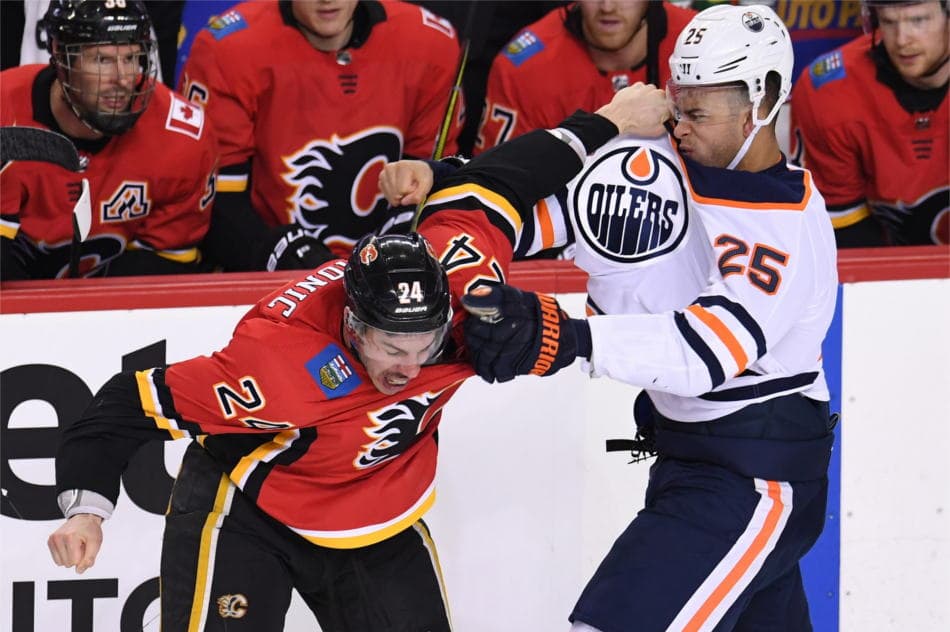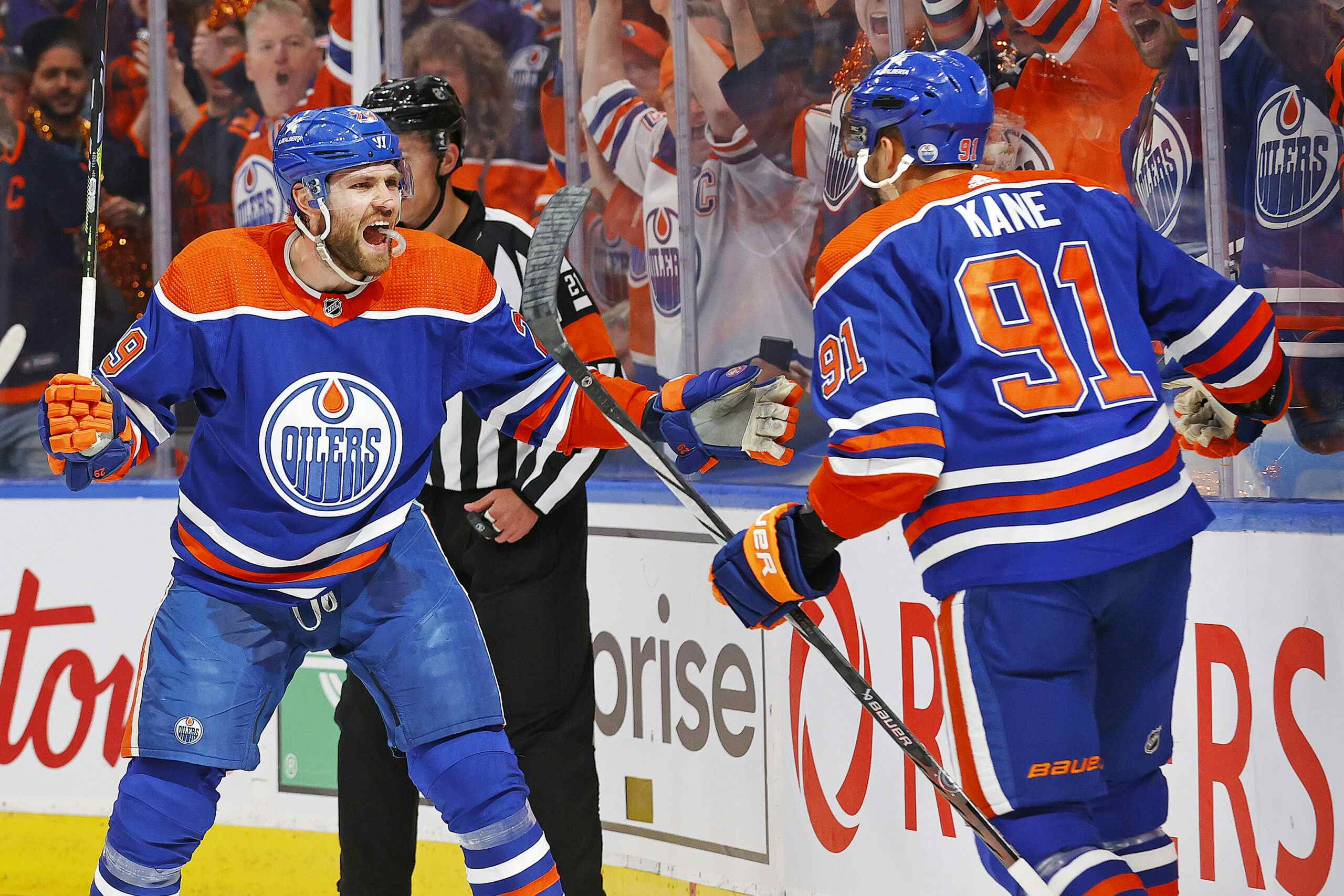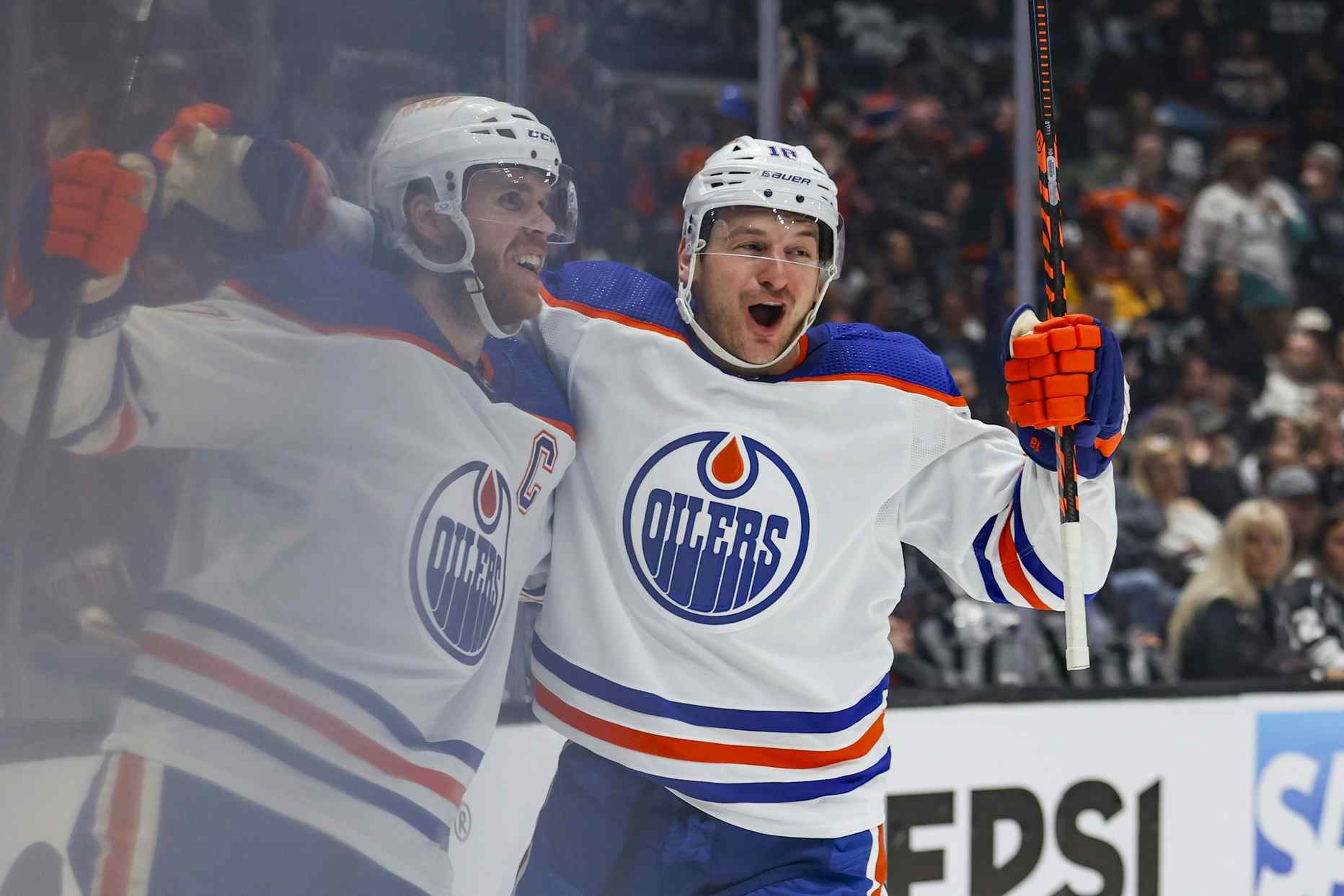Pacific Preview: The Flames are also looking to rebound from a disappointing season

By Cam Lewis
5 years agoThis is one part of a multi-part series profiling the teams of the Pacific Division from an Oilers perspective.
Much like their rivals from north on the QEII, the Calgary Flames had a letdown of a 2017-18 season. The Flames were projected as a playoff team but ultimately a late-season implosion left them on the outside looking in. As a result, the team fired their head coach and pulled the trigger on a couple of major moves in the off-season.
What did they do last season?
- 37-35-10 – 84 points (5th in Pacific)
- 218 goals for (26th in the NHL)
- 248 goals against (19th in NHL)
The Flames’ 2017-18 season can be summarized by death from a couple of massive losing streaks. They got off to a decent start to the season but really exploded out of the gate in the New Year. The Flames held an 18-6-4 record heading into a New Year’s Eve game against the Chicago Blackhawks, putting them thoroughly within playoff contention. They went on to win seven games in a row from there, jetting them up the Pacific Division standings.
After that, though, the wheels fell off as quickly as the train started rolling. The Flames followed up their seven-game streak with a six-game skid, dropping them back down and out of a playoff spot. They would tread water for the next month and a bit, sliding in and out of the logjam in the West before completely imploding in mid-March. The Flames suddenly forgot how to score goals and went on a seven-game skid which ultimately ended their season.
What went wrong? A few things. Calgary wasn’t great at keeping the puck out of the net and they had a terrible time at getting the puck in the other team’s net. That isn’t a recipe for success.
Mike Smith was actually pretty good last season as he posted a .916 save percentage in 55 games. Unfortunately, neither Jon Gillies or David Rittich was particularly good in relief, as they posted a .896 and .904 save percentages respectively. The issue really was the team’s offence. The Flames ranked 26th in the league in goals for largely because the team had virtually zero offensive depth.
Calgary only got scoring from their top-six. Johnny Gaudreau, Sean Monahan, and Matthew Tkachuk performed as expected, Mark Jankowski had a breakout offensive season, and Michael Ferland chipped in with 21 goals, but, after that, the Flames were desolate in terms of offence. Troy Brouwer, Curtis Lazar, Matt Stajan, and Garnet Hathaway played the majority of the season and combined for 16 goals. Sam Bennett, who was being leaned upon to take a step forward, scored just 11 goals.
It was noticeable during Calgary’s seven-game losing streak down the stretch that the team had no offensive depth. Once you shut down the team’s top line, there was nothing they could do.

May 30, 2018; Las Vegas, NV, USA; Vegas Golden Knights left wing James Neal (18) celebrates with left wing Erik Haula (56) after scoring a goal against the Washington Capitals in the first period in game two of the 2018 Stanley Cup Final at T-Mobile Arena. Mandatory Credit: Stephen R. Sylvanie-USA TODAY Sports
What did they do in the off-season?
- Notable additions: James Neal, Noah Hanifin, Elias Lindholm, Austin Czarnik, Derek Ryan.
- Notable subtractions: Dougie Hamilton, Michael Ferland, Matt Stajan, Troy Brouwer.
- Other stuff: Signed Elias Lindholm and Noah Hanifin to six-year contracts, traded Hunter Shinkaruk to the Montreal Canadiens for Kerby Rychel, signed Mark Jankowski to a two-year contract.
The Flames had a busy off-season. They fired Glen Gulutzan after just two seasons and replaced with Carolina Hurricanes bench boss Bill Peters. Soon after that, I imagine uncoincidentally, they acquired two key players from Peters’ Hurricanes. They dealt Dougie Hamilton, Michael Ferland, and prospect Adam Fox in a very controversial swap for Elias Lindholm and Noah Hanifin.
Hamilton and captain Mark Giordano formed one of the better pairings in the league when together, and while Hanifin is a good young defender, he’s a notable downgrade on the aforementioned Hamilton. Ferland was set to become an unrestricted free agent at the end of the season, but he was one of Calgary’s better goal-scoring wingers, while Lindholm has mustered just a career-high of 16 goals. If Lindholm and Hanifin both grow to their potential this could work nicely for the Flames, but it’s hard to call this a win in the short-term.
An obvious upgrade in the short-term, though, was the signing of James Neal to a five-year deal. Neal had a big season with the Vegas Golden Knights and gives the team the top winger to play alongside Johnny Gaudreau and Sean Monahan on the top line they’ve been coveting. That deal might not look good a couple years from now given the fact that Neal is already 31 years old, but it certainly fills a major need right now.
Beyond Neal, the Flames also added more offensive depth by signing former Hurricane Derek Ryan to be the team’s third centre and former Bruin Austin Czarnik to fit in on the wing in the bottom-six. Those two should be upgrades over Matt Stajan, who retired, and Troy Brouwer, who was bought out.

Mar 31, 2018; Calgary, Alberta, CAN; Edmonton Oilers left wing Milan Lucic (27) and Calgary Flames goaltender Mike Smith (41) fight during the third period at Scotiabank Saddledome. Calgary Flames won 3-2. Mandatory Credit: Sergei Belski-USA TODAY Sports
What’s going to happen this season?
Looking at the Flames heading into 2018-19 is sort of a mixed bag. There’s no doubt that their free agent signings are upgrades on the players that they replaced. Neal gives them a top winger they haven’t had in the past, Ryan is a much better third centre than Stajan, and simply removing Brouwer is an upgrade in itself.
But are Lindholm and Hanifin upgrades on Ferland and Hamilton? Lindholm has always thrived in more of a two-way game, meaning he could be very effective alongside one of Calgary’s more defensive-minded forwards like Mikael Backlund. Given the fact Neal will add a lot of punch to the top-six, the Flames can afford to lose a little bit of offence from Ferland to Lindholm. Suggesting Hanifin is as good as Hamilton, though, would be a massive stretch.
Hamilton potted 17 goals and 44 points for the Flames last year while logging 21:30 a night. He also had the best underlying numbers on the team, posting a 57.4 percent shot attempt differential. Hanifin scored 32 points in his third full season in the NHL and boasted solid underlying numbers for the Hurricanes, though he was spoonfed soft offensive minutes.
Even if the downgrade from Hamilton to Hanifin is large, it’s hard to argue that Calgary’s forward group isn’t quite a bit better than it was last year. That should lead to more success in the offensive zone.
Another key for the Flames comes down to how the team responds to their new coach. Bill Peters is known as a hardass, system-oriented coach. The Hurricanes had very good possession stats under Peters but a combination of poor goaltending and a lack of high-end skill resulted in them underachieving what their peripherals suggested. The Flames have quite a bit of high-end talent, so could Peters’ style translate to success in Calgary?
Recent articles from Cam Lewis





